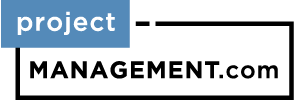The anatomy of the workplace pre-pandemic seems so far away. Now a lot of companies are going back to the office slowly and in a hybrid fashion. Many have hired fully remote employees that are not local, so teams will continue to be spread out.
The focus right now is trying to figure out the best way to have meetings that accommodate both on-site and remote workers, with policies that work for everyone. This will be an interesting and evolving conversation as workers voice their opinions and company executives smartly evolve their models to accommodate this new work culture.
Read more: Best Project Management Solutions for Remote Teams in 2021
What Is Work Culture?
Work culture is the attitudes, beliefs, and behaviors that define the atmosphere in a work environment. Work culture determines how well a person fits into their environment at a new job, and their ability to build professional relationships with colleagues. It is often the topic of interview questions when seeking the perfect fit.
Work culture includes traditional experiences you expect — like lunches, meetings in conference rooms, and coffee breaks. When adapting work culture to a hybrid model, the goal is to support productivity, make workers feel included, and create connections between coworkers.
How Culture Must Shift to Accommodate Hybrid Offices
In a hybrid office setup, which is becoming more common, workers are sometimes on-site and sometimes remote, with some people fully one or the other. A shift in work culture is underway, and businesses across the globe are trying different ways to accommodate everyone. This may include:
- Using instant messaging, video conferencing software like Zoom, and email as the primary ways of communicating and sharing information
- Requiring workers to figure more things out on their own during onboarding, such as technology setup and troubleshooting, as well as meeting and getting to know their new team
- Practicing more patience, as leadership expectations tend to lean towards doing more faster when you can work from anywhere
- Keeping and respecting others’ office hours, especially across time zones
- Not scheduling too many or too long meetings, and marking working times on the calendar
- Providing constant updates on project status to all team members
Read more: Establishing Meeting Cadence for Remote Project Teams
Challenges in Adapting Work Culture to the New Hybrid Office
With new experiences come new wrinkles to iron out as each organization determines the best plan for their needs. These challenges include the following:
- Flexibility and adaptability: Understand and accept that not everyone will all be together again at the same place and time.
- Differences of opinion: Know that some workers are advocates for in-person interaction and others are supportive of remote working and the benefits it provides.
- Setting a schedule: Assign in-office days versus allowing people to choose their own schedule, and avoid the scenario where too many people come in at one time to effectively utilize available office space.
- Constant communication: Maintain clear communication to avoid confusion and isolation for those working remotely; send follow-up email/notes after an in-person meeting to all involved.
- Fairness: Ensure equal access to promotions and career advancement, no matter where someone works or how. Out of sight shouldn’t mean out of mind.
- Defining rules: Determine if all in-person workers should be on camera for meetings like remote workers are. Everyone should have the same access to hearing and seeing what is being discussed and presented, with minimal side conversation.
- Being present: Check in often if working remotely, as you don’t have the same opportunities to bump into people or strike up conversations as in-person allows.
- Education: Train managers on performance monitoring and evaluation tools that allow them to objectively evaluate employees, regardless of where they are.
- Take time: Avoid over- and under-working by maintaining a good work/life balance, modeling the habits you want to see in team members.
How Project Managers Can Help Overcome Work Culture Issues
Project managers are more important now than ever to help plan, coordinate, and move things forward from a remote control tower. Managing a team that is located all over the place takes time and planning and constant attention.
Keeping a good rapport with all members of a team and checking in frequently will allow project managers to see what is working and what is not. Project managers should work with management to get an understanding of where team leads and team members stand on returning to the office, in what capacity, and to identify which roles are better suited for in-person and which ones make sense being remote.
Read next: Top Remote Working Software and Tools for 2021
Featured Partners: Project Management Software
If you’re interested in learning more about top rated project management software, the editors at Project-Management.com actively recommend the following:












